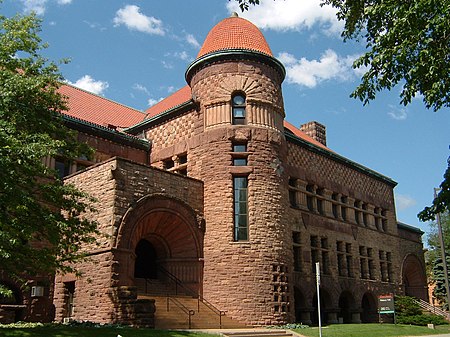University of Minnesota Old Campus Historic District
Historic districts on the National Register of Historic Places in MinnesotaNRHP infobox with nocatNational Register of Historic Places in MinneapolisRomanesque Revival architecture in MinnesotaUniversity and college buildings on the National Register of Historic Places in Minnesota ... and 1 more
University of Minnesota

The University of Minnesota Old Campus Historic District is a historic district located in Minneapolis, Minnesota. Listed in the National Register of Historic Places since 1984, it includes a number of historic buildings that were constructed during the late 1800s and early 1900s. The district represents the oldest extant section of the University of Minnesota campus.
Excerpt from the Wikipedia article University of Minnesota Old Campus Historic District (License: CC BY-SA 3.0, Authors, Images).University of Minnesota Old Campus Historic District
Southeast Pillsbury Drive, Minneapolis
Geographical coordinates (GPS) Address Nearby Places Show on map
Geographical coordinates (GPS)
| Latitude | Longitude |
|---|---|
| N 44.978333333333 ° | E -93.236666666667 ° |
Address
John Sargent Pillsbury
Southeast Pillsbury Drive
55455 Minneapolis
Minnesota, United States
Open on Google Maps







